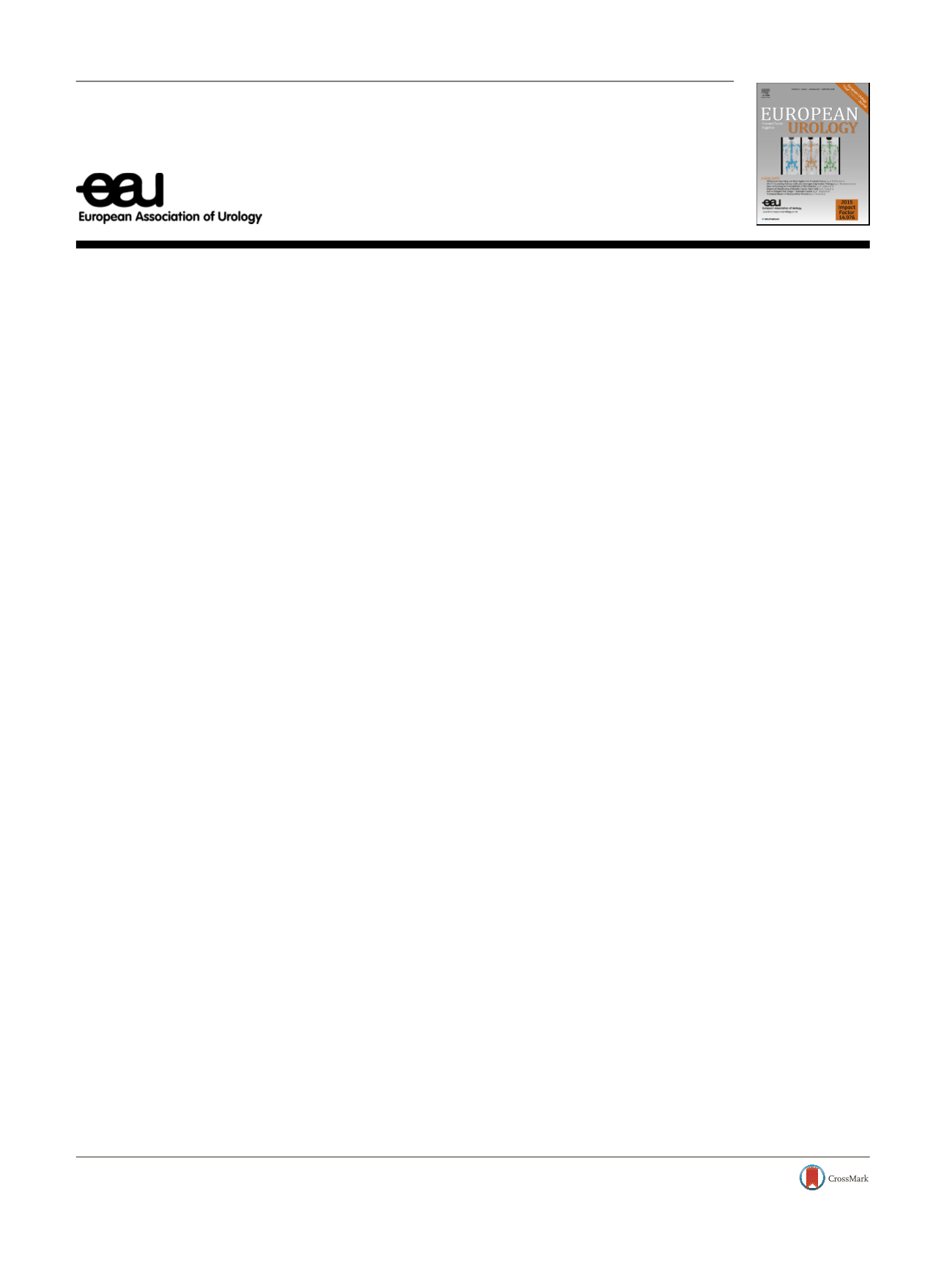

Letter to the Editor
Reply to Eugenio Ventimiglia, Paolo Capogrosso,
Walter Cazzaniga, Francesco Montorsi, and
Andrea Salonia’s Letter to the Editor re:
Giovanni Corona, Giulia Rastrelli, AbrahamMorgentaler,
Alessandra Sforza, Edoardo Mannucci, Mario Maggi.
Meta-analysis of Results of Testosterone Therapy
on Sexual Function Based on International
Index of Erectile Function Scores. Eur Urol 2017;72:
1000–11
We would like to thank Ventimiglia and colleagues for their
thoughtful and well-argued comments on our paper
[1] .However, it would appear that they have misinterpreted
the main point of the article. Our data show that testosterone
therapy (TTh) is effective in improving erection in random-
ized controlled trials (RCTs), albeit with limited effective-
ness. In fact, TTh increases the International Index of Erectile
Function-erectile function domain (IIEF-EFD) score by
2–3 points when compared to placebo. In addition, the
meta-regression analysis of testosterone (T) improvement as
a function of mean basal IIEF-EFD scores did not indicate a
statistically significant relationship, even though an eyeball
analysis of the data suggests a major improvement in those
studies enrolling subjects with higher IIEF-EFD scores at
baseline. According to the suggestion by Ventimiglia et al,
we categorized subjects according to erectile dysfunction
(ED) severity (ie, mild, moderate, severe ED using the mean
IIEF-EFD score). In line with data derived from the meta-
regressions, we now report that there is no difference among
groups (
p
= 0.198 for trend for difference). This is tanta-
mount to saying that the small (but significant) effect of TTh
could be apparent in all subjects with ED, irrespective of its
severity. Hence, all subjects with low T and ED are eligible to
undergo TTh. Meanwhile, it is important to note that
according to findings reported by Rosen et al
[2] ,a 2–3 point
increase in IIEF-EFD score could be clinically meaningful per
se only for subjects withmild ED. In all other cases, the utility
of TTh is in paving the way to successful therapy with
phosphodiesterase type 5 inhibitors
[3] ,besides treating the
underlying endocrine disorder, which is another important
point
[4] .Considering that the number of eligible RCTs is
relatively limited and the individual values are not reported
(as well as stratification of the cohorts according to ED
severity) the only possible analysis is meta-regression, as
reported in the original paper.
Concerning the second point, we fully agree with the
view of Ventimiglia et al that low T is often associated with
several unhealthy conditions, including metabolic derange-
ments
[5]. We interpreted this association as a resilient
mechanism to spare energy and to decrease sexual activity
and fecundity among less healthy individuals
[6]. As stated
before, ED severity does not smooth the beneficial effect of
TTh on erection. However, our data show that higher
prevalence of diabetes and a higher mean body mass index
are both associated with a significantly lower TTh response.
It is conceivable that other comorbidities share the same
effect, but this is impossible to test because of the limited
information in the primary studies. The apparently lower
response to TTh in patients with diabetes and/or obesity
could be due to the vascular damage associated with the
metabolic condition, or to a lower severity of T deficiency. In
fact, as shown in our meta-analysis, a better response to TTh
in terms of erection is obtained in subjects with more severe
T deficiency at baseline.
Conflicts of interest:
Giovanni Corona has received consultancy fees
from Bayer, Besins, Otsuka, Eli-Lilly, and Menarini. Mario Maggi has
received consultancy fees from Besins, Bayer, Prostrakan, GSK, Eli-Lilly,
and Menarini. Giulia Rastrelli and Edoardo Mannucci have nothing to
disclose.
References
[1]
Corona G, Rastrelli G, Morgentaler A, Sforza A, Mannucci E, Maggi M. Meta-analysis of results of testosterone therapy on sexual function based on International Index of Erectile Function Scores. Eur Urol 2017;72:1000–11.[2]
Rosen RC, Allen KR, Ni X, Araujo AB. Minimal clinically important differences in the erectile function domain of the International Index of Erectile Function scale. Eur Urol 2011;60:1010–6.[3]
Corona G, Isidori AM, Aversa A, Burnett AL, Maggi M. Endocrinologic control of men’s sexual desire and arousal/erection. J Sex Med 2016;13:317–37.[4]
Corona G, Rastrelli G, Vignozzi L, Maggi M. Emerging medication for the treatment of male hypogonadism. Expert Opin Emerg Drugs 2012;17:239–59.[5]
Rastrelli G, Carter EL, Ahern T, et al. Development of and recovery from secondary hypogonadism in aging men: prospective results from the EMAS. J Clin Endocrinol Metab 2015;100:3172–82. E U R O P E A N U R O L O G Y 7 2 ( 2 0 1 7 ) e 1 6 2 – e 1 6 3available at
www.scienced irect.comjournal homepage:
www.europeanurology.comDOIs of original articles:
http://dx.doi.org/10.1016/j.eururo.2017.03.032 , http://dx.doi.org/10.1016/j.eururo.2017.05.050.
http://dx.doi.org/10.1016/j.eururo.2017.05.0510302-2838/
#
2017 Published by Elsevier B.V. on behalf of European Association of Urology.
















